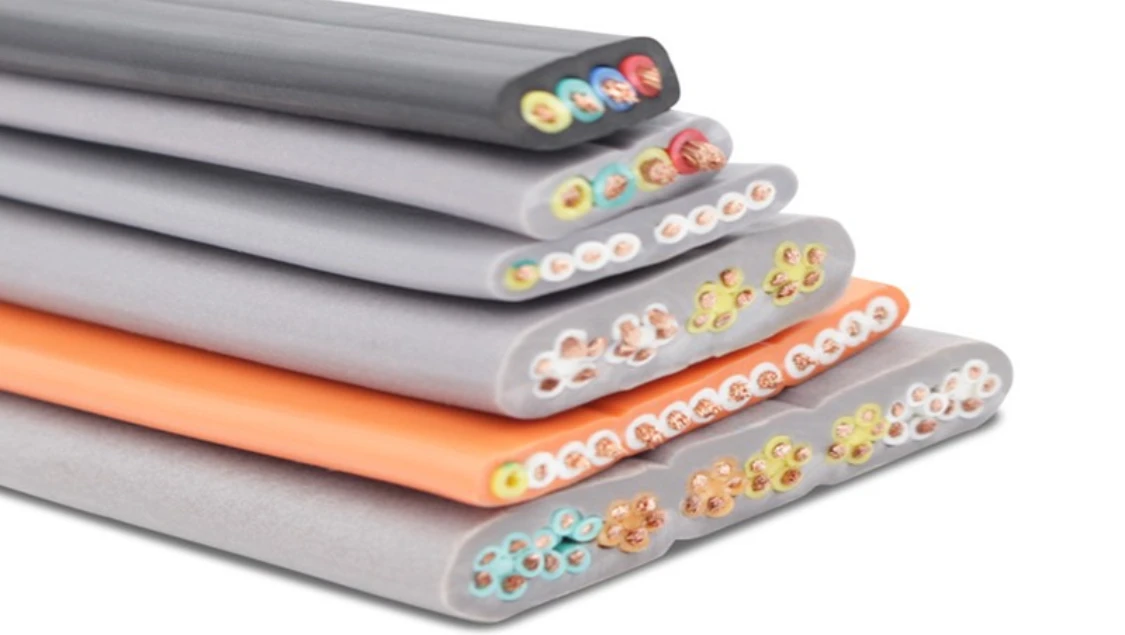 Elevators are an integral part of modern infrastructure, providing efficient vertical transportation in various buildings, from commercial high-rises to residential complexes. Behind the scenes, elevator systems rely on a multitude of components to ensure safe and reliable operation. One critical component is the flat flexible cable (FFC), which plays a vital role in transmitting power, signals, and data between different parts of the elevator system. This article delves into the different types of flat flexible cables used in elevators and their significance in ensuring smooth elevator operation.
Elevators are an integral part of modern infrastructure, providing efficient vertical transportation in various buildings, from commercial high-rises to residential complexes. Behind the scenes, elevator systems rely on a multitude of components to ensure safe and reliable operation. One critical component is the flat flexible cable (FFC), which plays a vital role in transmitting power, signals, and data between different parts of the elevator system. This article delves into the different types of flat flexible cables used in elevators and their significance in ensuring smooth elevator operation.Flat Flexible Cables: An Overview
Flat Flexible Cables (FFCs), also known as flat ribbon cables, are thin and lightweight cables that consist of multiple flat conductors laminated together. These cables are designed to be highly flexible, making them ideal for applications where space constraints and bending requirements are significant considerations, such as elevators. FFCs are used in various industries for connecting electronic components and devices, and their application in elevator systems is crucial for maintaining seamless communication and power distribution between different parts of the elevator.
Types of FFCs Used in Elevators
-
Power Cables: Power distribution within an elevator system is essential for its operation. FFCs designed for power transmission are engineered to handle the current required for driving elevator motors, lighting, and other power-hungry components. These cables are designed to be durable and resistant to mechanical stress, as they often need to withstand repetitive movements associated with elevator operation.
-
Communication Cables: Elevator systems require efficient communication between various components, including control panels, sensors, and motor controllers. FFCs designed for communication purposes carry signals that control elevator movements, door operations, and safety systems. These cables are designed to maintain signal integrity and minimize electromagnetic interference (EMI) to ensure accurate and reliable data transmission.
-
Data Cables: Modern elevators are equipped with advanced features, including touchscreen displays, internet connectivity, and remote monitoring capabilities. Data cables within FFCs enable the transfer of data between different elevator subsystems and external networks. These cables are engineered to support high-speed data transmission while minimizing data loss and interference.
-
Flexibility and Durability: FFCs used in elevators are engineered to withstand the constant flexing and bending that elevator systems undergo during operation. They are often made from materials that can endure mechanical stress without compromising performance. Additionally, these cables may feature protective coatings to enhance their resistance to environmental factors like temperature fluctuations, moisture, and chemicals.
-
Space Efficiency: FFCs' flat and compact design allows them to fit easily into tight spaces within elevator shafts and control panels, optimizing the use of available space.
-
Reliability: The flexibility and durability of FFCs ensure a consistent connection even in dynamic and challenging operating conditions, minimizing the risk of signal loss or power disruptions.
-
Reduced Interference: Shielding options and proper cable layout in FFCs help reduce electromagnetic interference, contributing to stable signal transmission and system reliability.
-
Ease of Installation: FFCs are relatively simple to install due to their flexible nature and standardized connectors, reducing installation time and costs.


